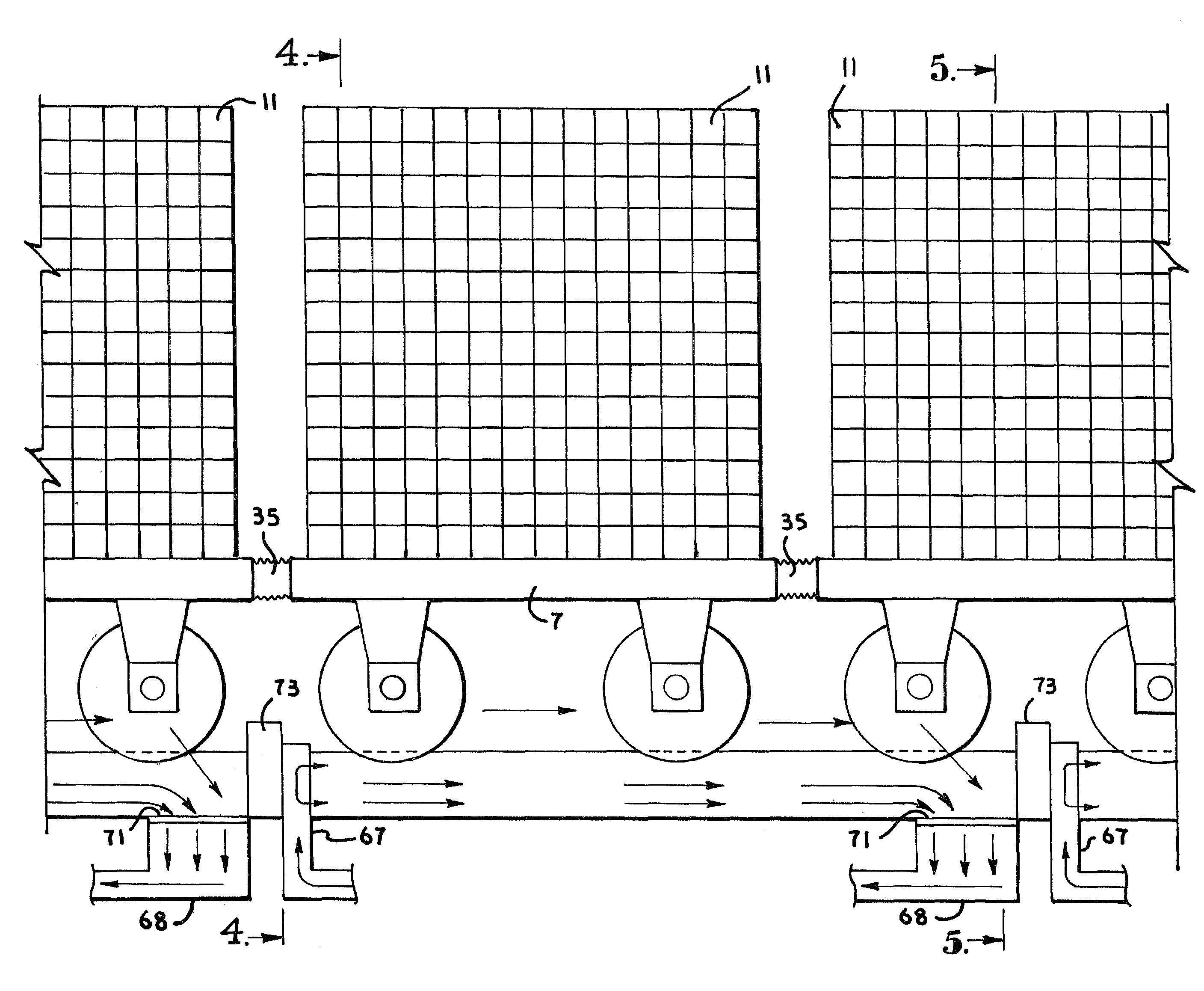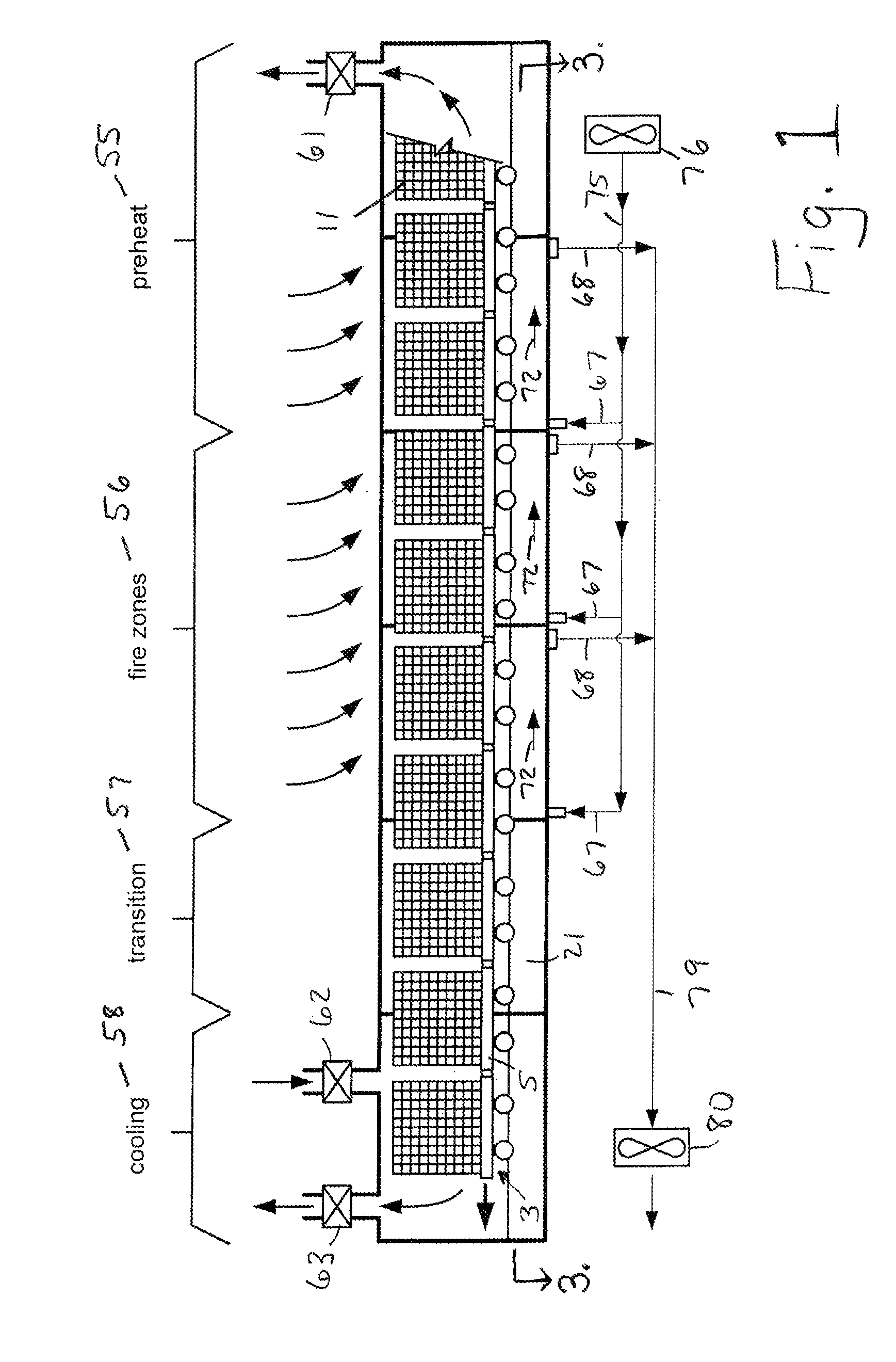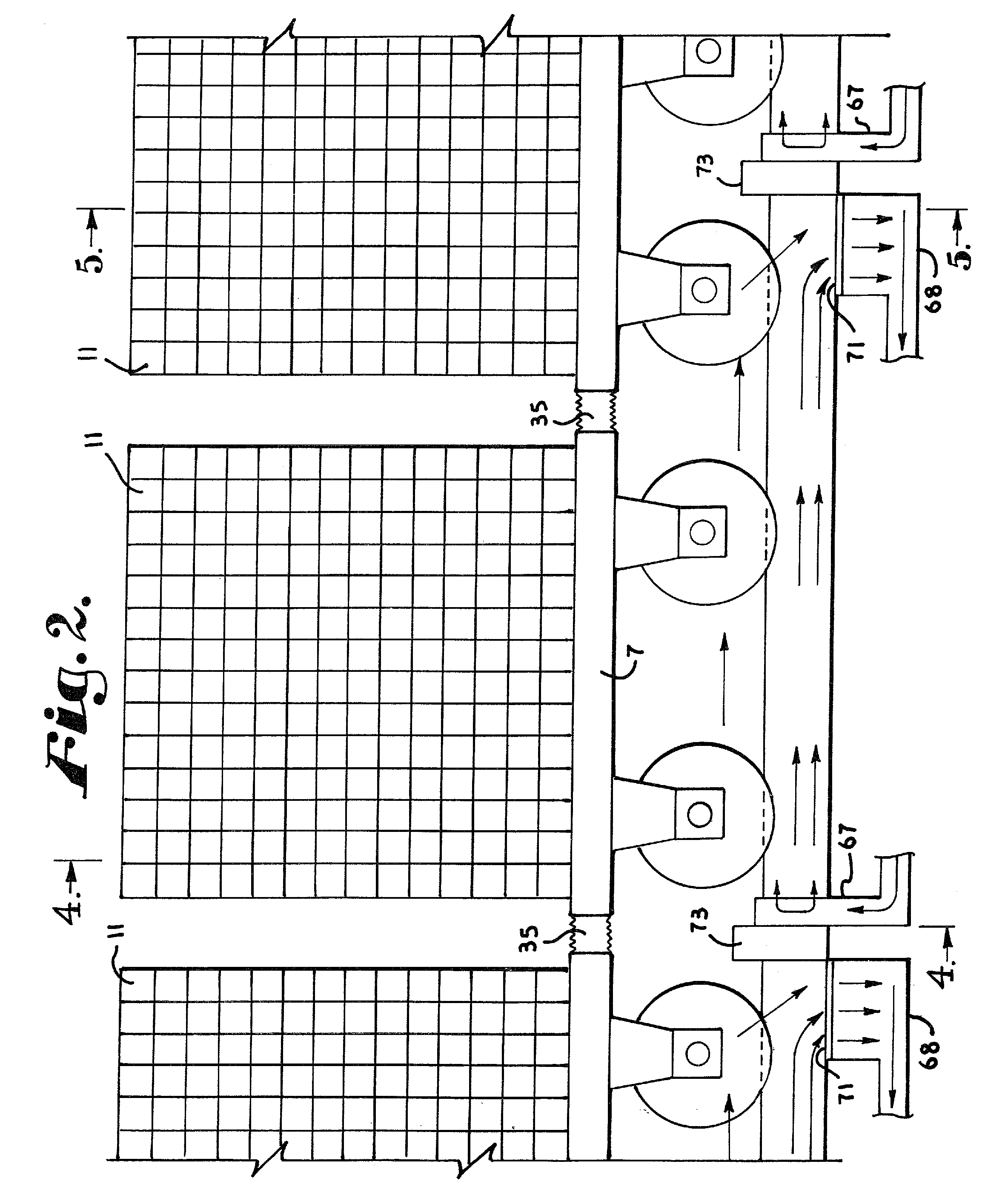Method and apparatus for cooling the underside of kiln cars
a technology for cooling the underside and the underside of the car, which is applied in the direction of furnace cooling, furnace types, furnaces, etc., can solve the problems of not providing a perfect seal, sand barrier actually permeable to gas, and seals are far from per
- Summary
- Abstract
- Description
- Claims
- Application Information
AI Technical Summary
Benefits of technology
Problems solved by technology
Method used
Image
Examples
Embodiment Construction
[0021]Referring to the drawings in more detail, a schematic view of a tunnel kiln 1 with a kiln car train 3 passing therethrough is shown in FIG. 1. The kiln car train 3 comprises a plurality of kiln cars 5 coupled together in end to end alignment. Referring to FIG. 2, which is an enlarged and fragmentary view of the kiln car train 3 in the tunnel kiln 1. Each of the kiln cars 5 includes a deck 7 supported by an undercarriage 9. Articles to be cured, such as bricks 11, are stacked on and supported by the deck 7 and the undercarriage facilitates passage of the kiln car 5 through the tunnel 1. An undercarriage cooling system 13 is incorporated into the tunnel kiln 1 to cool the undercarriages 9 of the kiln cars 5 as the train 3 passes through the tunnel kiln 1. It is to be understood that the drawings provided, including schematic views, are not drawn to scale and relative proportions have been modified to allow the drawings to fit the space provided. In addition, the relative proport...
PUM
 Login to View More
Login to View More Abstract
Description
Claims
Application Information
 Login to View More
Login to View More - R&D
- Intellectual Property
- Life Sciences
- Materials
- Tech Scout
- Unparalleled Data Quality
- Higher Quality Content
- 60% Fewer Hallucinations
Browse by: Latest US Patents, China's latest patents, Technical Efficacy Thesaurus, Application Domain, Technology Topic, Popular Technical Reports.
© 2025 PatSnap. All rights reserved.Legal|Privacy policy|Modern Slavery Act Transparency Statement|Sitemap|About US| Contact US: help@patsnap.com



